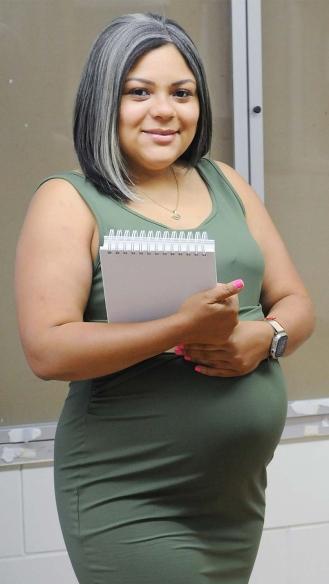
Nadhilis Rojas
As the psychologist at Gotham Collaborative HS in the Bronx for the past seven years, Nadhilis Rojas assesses students’ needs, refers them for services and tracks their progress. As a fluent English and Spanish speaker, she can more effectively serve her diverse school community.
How do you assess a student’s need for special education services?
I conduct an evaluation, which means I look at the student’s cognitive skills, academic skills and social and emotional functioning. Using all that information, plus teachers’ evaluations and information from the parents, I can see if a child is eligible for special education or other services.
What sets you apart as a bilingual school psychologist?
Speaking both English and Spanish helps me to identify whether a student’s struggles stem from a disability or if it’s actually a language deficit. Students with language deficits are often mischaracterized as having a disability. Many students coming into the country for the first time have interrupted instruction, which becomes a functional disability. It can be hard to tell the difference. For example, I had a 10th-grade student come from Honduras. His mom claimed he had attended school there, but all his academic skills were extremely low. We learned that, although he was enrolled in school in Honduras, he attended only once or twice a month because the school was an hour-and-a-half walk from home. Because I am bilingual, I knew he didn’t have a disability that called for special education services, but he needed extra help with learning loss and English.
What kinds of services do you refer students to?
Additional support, such as a paraprofessional, help in a specific subject area, counseling, speech therapy, a smaller class size or some other change in classroom setting. The goal is to recommend the least restrictive care possible.
What’s your favorite part of your job?
When I see students make significant progress. There was one girl who tested extremely low in multiple areas in 9th grade. By the beginning of 11th grade, she had a full IEP program for the four core classes. Then, in February of that same year when I reevaluated her, she had moved up three grade levels for reading and two for math.
What’s the most challenging part of your job?
Keeping up with all the paperwork. Though I wouldn’t say it’s challenging, just deeply time-consuming.
What do you want other educators to know about school psychologists?
I think most educators might think all we do is evaluations and writing IEPs, but I want them to see us as part of the school community and take advantage of our skills. We’re trained in crisis intervention and counseling. For example, I had a student share with me during an evaluation that she was afraid to go home because of a conflict with her mother. I was equipped to follow up with questions about what she meant and what feeling safe in her home looked like. I knew how to follow protocol to keep the student safe.
What part of your job makes you really happy?
I run a learner’s permit club where I work with students with disabilities preparing to drive. The school has a partnership with the Department of Motor Vehicles that allows the students to take the test through the school with accommodations. I had one student last year who was permitted to wear headphones and have the questions read to him. Between the accommodations and the preparation, he passed the written test and is learning how to drive. He and his dad were very excited because, even though he struggles to read, his daily living skills are average. Being able to drive will open up a lot of possibilities for him. Each child is an individual. They come with their own stories and backgrounds, and I think hearing those stories and connecting with them on their level is what keeps me going.
— As told to Hannah Brown